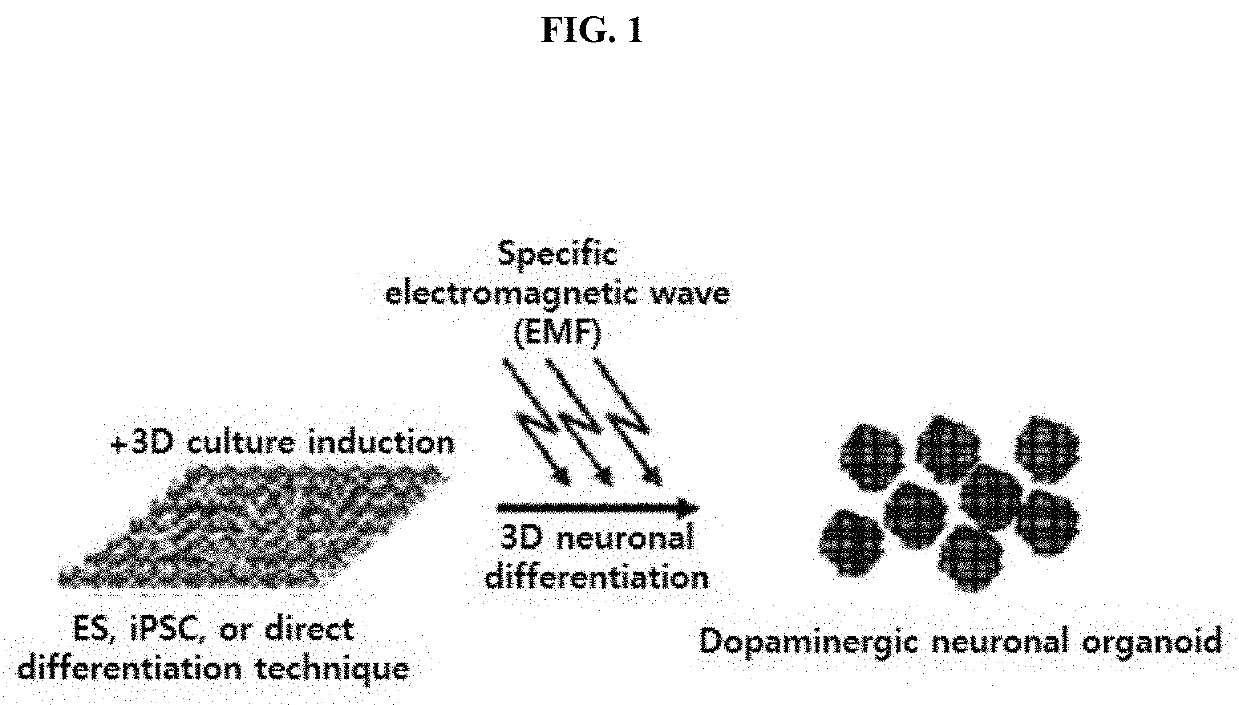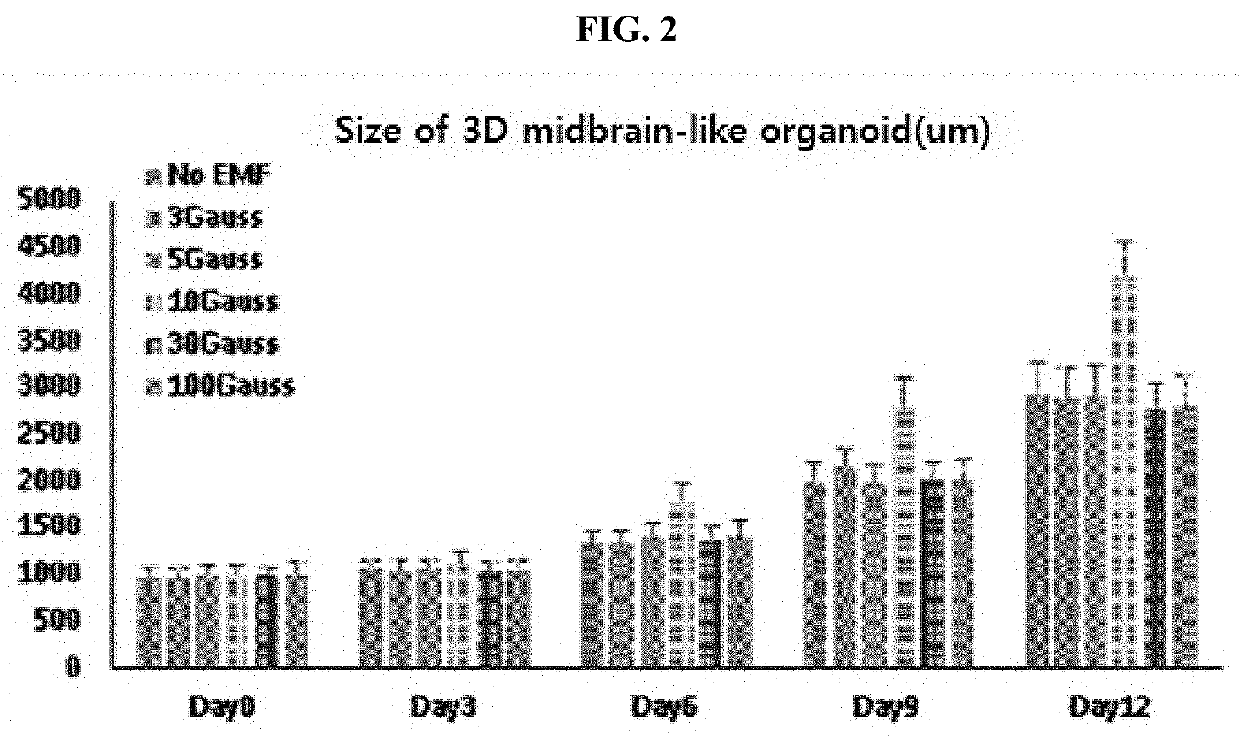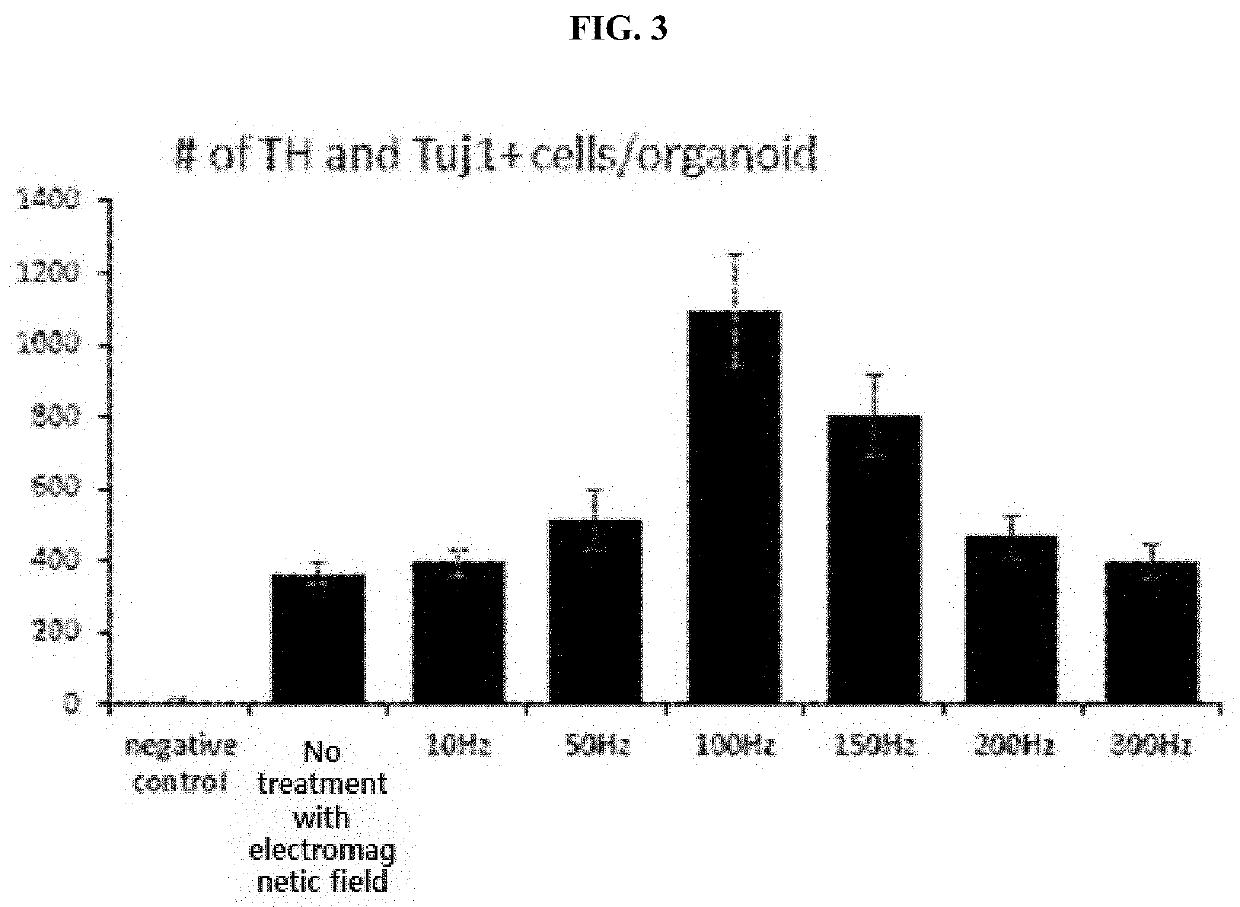Method for efficiently producing 3D midbrain-like organoid through specific electromagnetic wave processing
a technology of electromagnetic wave processing and organoid, which is applied in the field of midbrain-like organoid, can solve the problems of reducing reducing the utilization rate of such cells as therapeutic agents, and causing cancer, so as to maximize the cell regeneration effect, improve the production efficiency of dopaminergic neurons, and efficiently implement
- Summary
- Abstract
- Description
- Claims
- Application Information
AI Technical Summary
Benefits of technology
Problems solved by technology
Method used
Image
Examples
example 1
of Efficient Differentiation into 3D Dopaminergic Neuronal Organoid Using Electromagnetic Field
[0049]In order to identify a method capable of more efficiently inducing differentiation of stem cells into a 3D dopaminergic neuronal organoid, a method of subjecting stem cells including embryonic stem cells and induced pluripotent stem cells to treatment with a specific electromagnetic field to differentiate into a 3D neuronal organoid was contemplated, which is schematically shown in FIG. 1. More specifically, it was confirmed whether efficiency of differentiation into a 3D dopaminergic neuronal organoid is enhanced depending on various intensities and wavelengths of an external electromagnetic field.
[0050]1-1. Changes in Differentiation Efficiency of 3D Neuronal Organoid Depending on Intensity of Electromagnetic Field
[0051]First, in order to evaluate activity of differentiation into a 3D dopaminergic neuronal organoid depending on changes in treatment (intensity) with an electromagnet...
example 2
ation of Increased Production Efficiency of 3D Dopaminergic Neuronal Organoid Utilizing Metal Nanoparticles Magnetized with Electromagnetic Field
[0064]In the present example, based on the results of the above examples, an attempt was made to identify whether addition of metal nanoparticles to maximize the effect due to treatment with an electromagnetic field can more efficiently enhance induction of differentiation into a 3D dopaminergic neuronal organoid. More specifically, an attempt was made to identify that in a case where stem cells are first treated with gold nanoparticles (in which the gold nanoparticles have been coated with an RGD protein so that the gold nanoparticles are easily adsorbed on the cell surface when the cells are treated therewith) and then an electromagnetic field is applied, the metal nanoparticles are more directly magnetized in the cells, thereby more efficiently inducing 3D differentiation into a dopaminergic neuronal organoid. As a control group, a group...
example 3
ation of Therapeutic Effect on Parkinson's Disease Utilizing 3D Neuronal Organoid Differentiated by Using Electromagnetic Field
[0066]Furthermore, in the present example, an attempt was made to identify in vivo a therapeutic effect of the organoid, which had been induced to differentiate into a 3D neuronal organoid produced in the present invention, using an animal model of Parkinson's disease. For this purpose, a 3D dopaminergic neuronal organoid, which had been differentiated by the method of Example 1 for 7 days under an electromagnetic field, was transplanted into the brain of mice of Parkinson's disease, of which only one side of the brain had been treated with 6-hydroxydopamine (6-OHDA), and behavioral properties of the mice were analyzed. Here, as a control group, an organoid produced in the group to which an electromagnetic field had not been applied was used for transplantation. Three independent 3D differentiation induction experiments were performed with embryonic stem cel...
PUM
 Login to View More
Login to View More Abstract
Description
Claims
Application Information
 Login to View More
Login to View More - R&D
- Intellectual Property
- Life Sciences
- Materials
- Tech Scout
- Unparalleled Data Quality
- Higher Quality Content
- 60% Fewer Hallucinations
Browse by: Latest US Patents, China's latest patents, Technical Efficacy Thesaurus, Application Domain, Technology Topic, Popular Technical Reports.
© 2025 PatSnap. All rights reserved.Legal|Privacy policy|Modern Slavery Act Transparency Statement|Sitemap|About US| Contact US: help@patsnap.com



